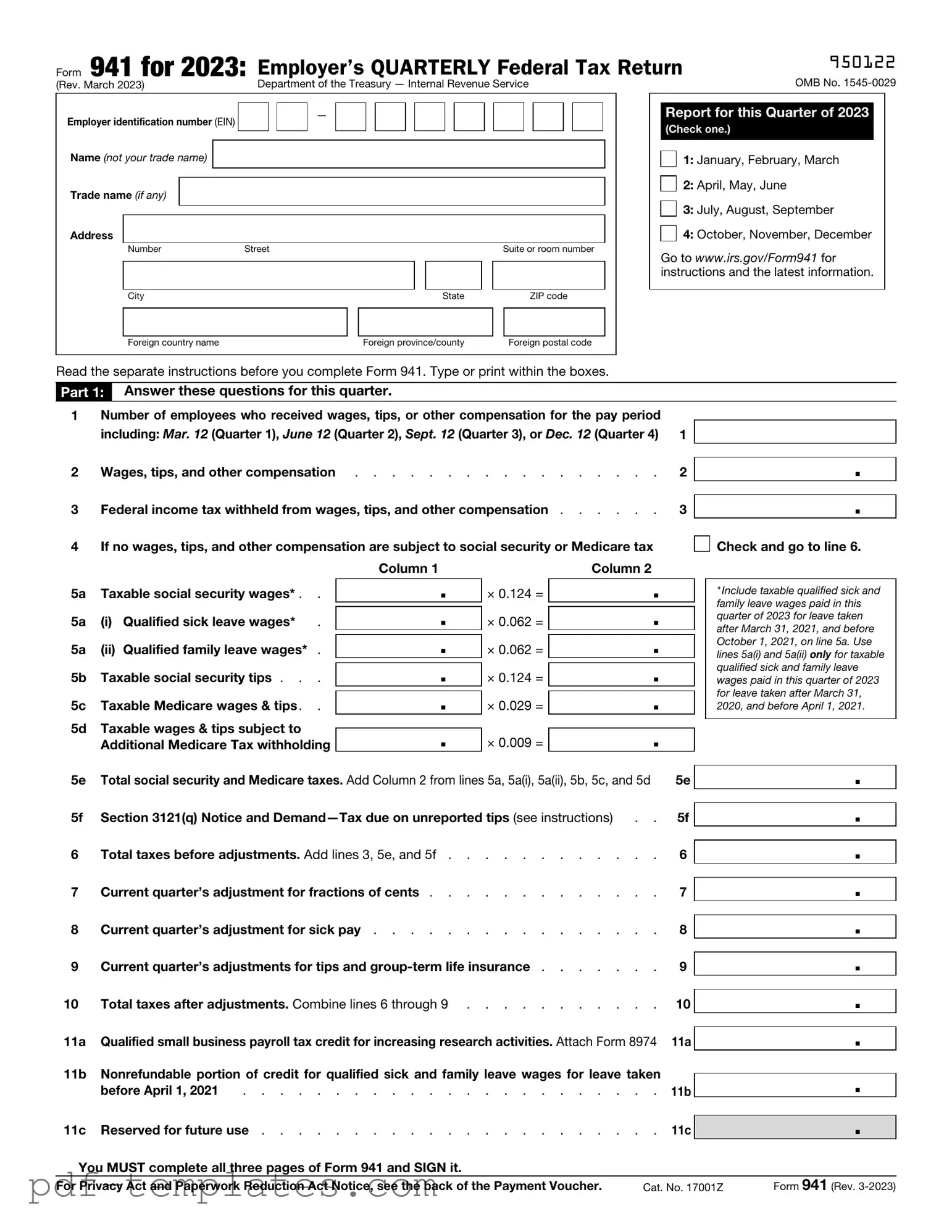The IRS Form 940 is similar to Form 941 in that both are used by employers to report taxes related to employee wages. While Form 941 focuses on federal income tax withholding and Social Security and Medicare taxes on a quarterly basis, Form 940 is an annual report of the Federal Unemployment Tax Act (FUTA) tax. Employers must file Form 940 to report unemployment taxes, which help fund unemployment benefits for workers who lose their jobs. Both forms require accurate reporting of wages, but they serve different tax purposes.
Form W-2 is another document that shares similarities with Form 941. Both forms are related to employee wages and tax withholding. Form W-2 is issued annually to employees, summarizing their total earnings and the taxes withheld from their paychecks throughout the year. Employers use information from Form 941 to prepare Form W-2, ensuring that the amounts reported for federal income tax, Social Security, and Medicare match what was withheld from employees’ pay. Thus, both forms play a crucial role in the tax reporting process for employees.
Form 1099-MISC is also comparable to Form 941, as both documents are used for reporting payments made to individuals. While Form 941 reports wages paid to employees, Form 1099-MISC is typically used to report payments made to independent contractors or other non-employees. Employers must issue Form 1099-MISC when they pay $600 or more to a non-employee during the year. Both forms require accurate reporting of payments to ensure compliance with federal tax laws.
Form 944 is similar to Form 941 in that it is also used to report employment taxes, but it is designed for smaller employers. Employers who owe less than $1,000 in payroll taxes annually can file Form 944 instead of Form 941. This annual filing simplifies the reporting process for small businesses, allowing them to report their federal income tax withholding and Social Security and Medicare taxes just once a year, rather than quarterly.
Form 943 is another document that parallels Form 941. It is specifically for agricultural employers who need to report income tax withheld from their employees’ wages. Like Form 941, Form 943 is filed on a quarterly basis, but it focuses on the unique tax situations faced by those in the agricultural sector. Both forms require detailed reporting of employee wages and withholdings, but they cater to different types of employers.
Form 945 is used to report backup withholding and is similar to Form 941 in that it deals with tax withholding from payments. While Form 941 reports withholding for wages, Form 945 is used for reporting non-payroll payments, such as interest and dividends, where backup withholding is applicable. Employers must file Form 945 annually to report these withholdings, ensuring compliance with IRS regulations.
Form 1095-C is related to health care reporting and shares a connection with Form 941 in terms of employer responsibilities. Employers with 50 or more full-time employees must file Form 1095-C to report information about health coverage offered to employees. While Form 941 focuses on tax withholding, Form 1095-C is essential for compliance with the Affordable Care Act, ensuring that employees have access to health insurance.
Form 4868 is similar to Form 941 in that it involves the reporting of taxes owed, but it serves a different purpose. Form 4868 is an application for an automatic extension of time to file an individual income tax return. While Form 941 reports employment taxes, Form 4868 allows taxpayers to extend their filing deadline for their personal income taxes, providing a temporary reprieve from the filing requirement.
Form 1065 is used by partnerships to report income, deductions, and credits, making it similar to Form 941 in that both forms require detailed financial reporting. While Form 941 focuses on employment taxes, Form 1065 reports the financial performance of a partnership. Both forms are essential for compliance with IRS regulations, but they apply to different types of entities and tax situations.
For those navigating property transfers, it's important to understand various legal documents, including the California Quitclaim Deed form, which can be particularly useful for swiftly transferring property interests without title guarantees. For more information about this essential document, you can visit https://formcalifornia.com/.
Finally, Form 1120 is the corporate income tax return, which shares a connection with Form 941 in terms of tax reporting. Corporations must file Form 1120 to report their income, gains, losses, deductions, and credits. While Form 941 is concerned with payroll taxes for employees, Form 1120 focuses on the overall financial performance of a corporation. Both forms are critical for ensuring that businesses meet their tax obligations to the IRS.
